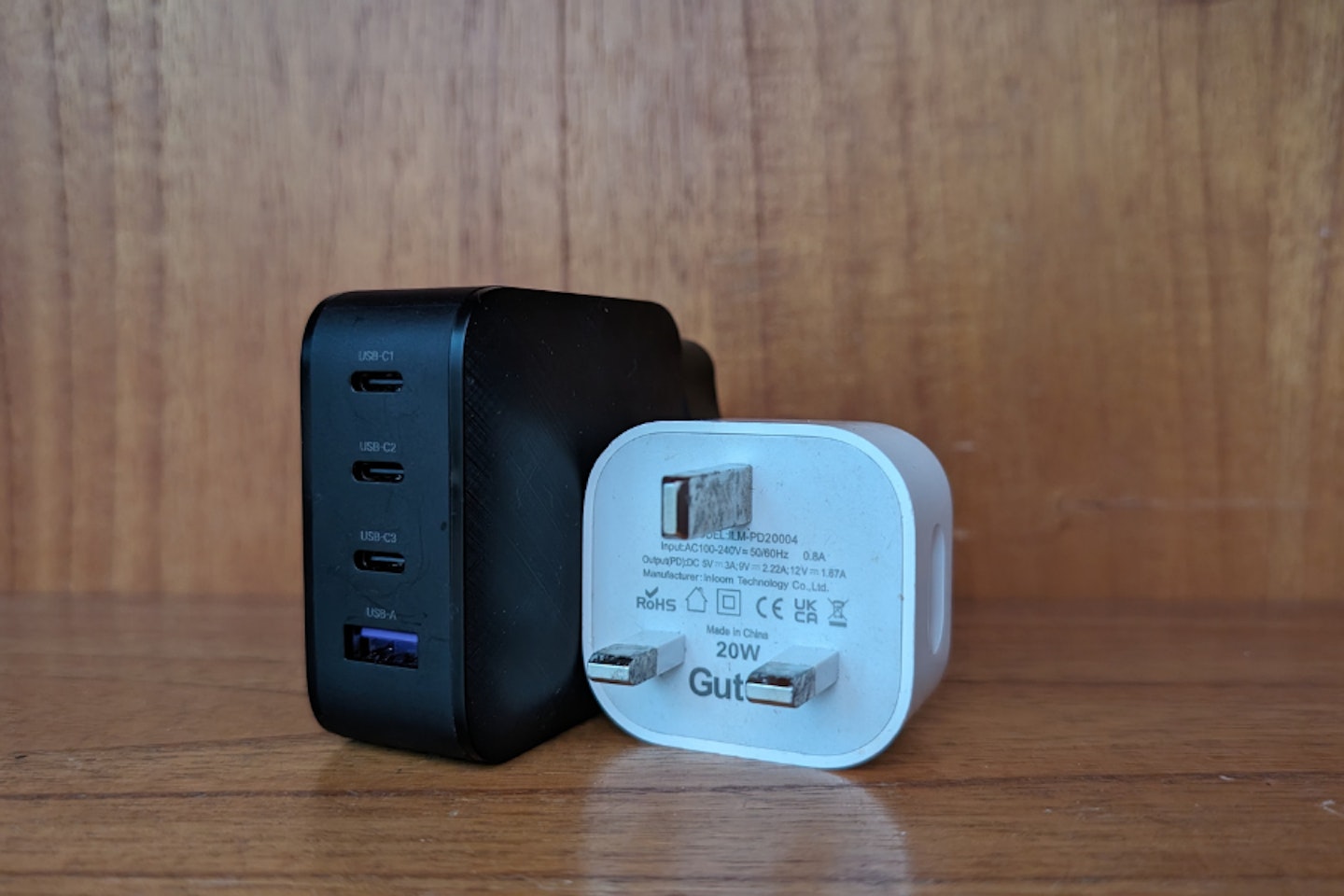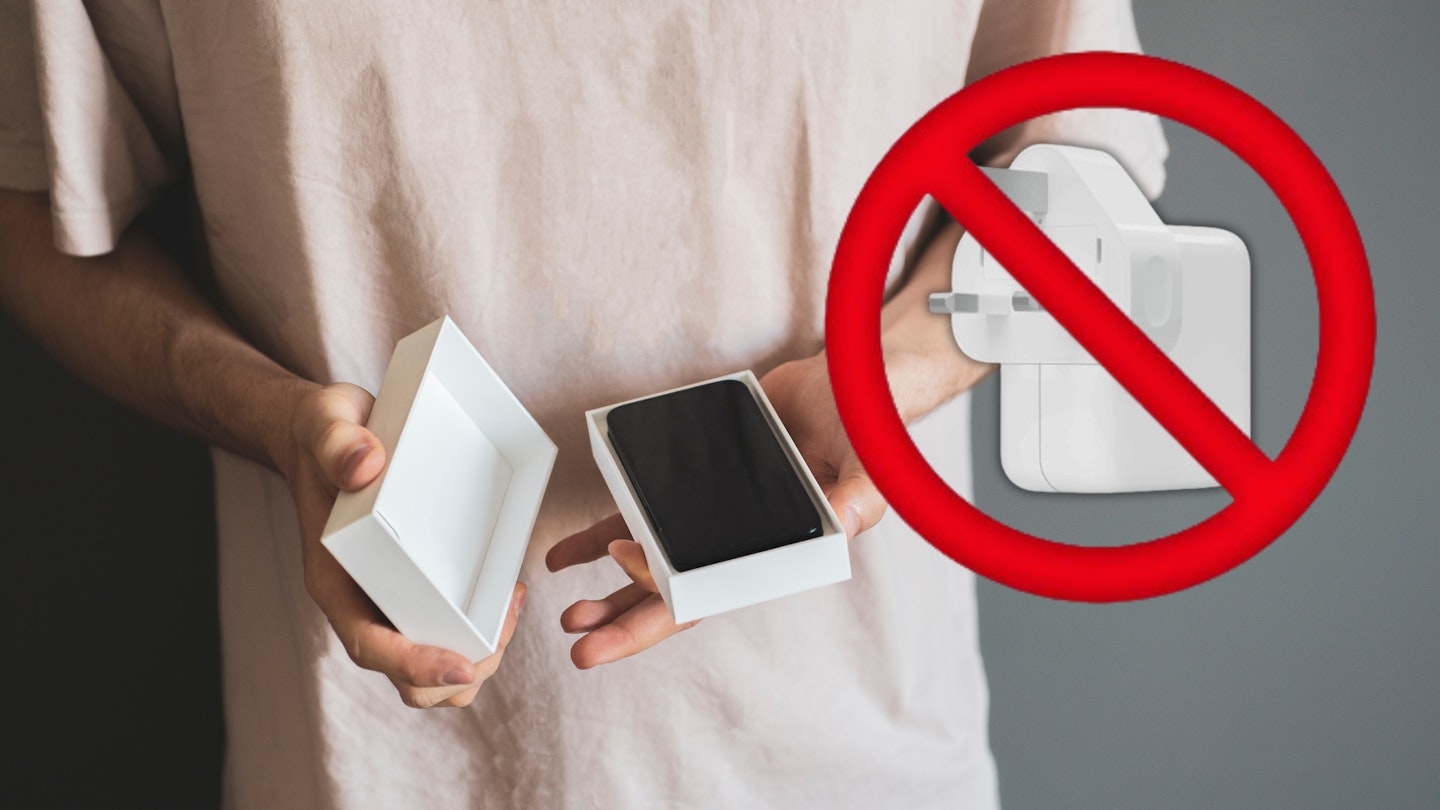Many remember the best phones of the year including everything you needed to get going, now it's an industry standard to exclude phone plugs from the packaging. There isn't a modern smartphone brand that's stopped including phone chargers with their devices, with many just including a USB C cable. But why is this happening?
From Apple to Samsung and Google, even the best budget smartphones of the year have stopped including phone chargers in their boxes: is this just another method of earning money? Or is there another reason as to why we've seen this trend grow across the industry?
As smartphones have grown more advanced over the years, there have also been massive improvements to phone charger technology - we've seen many phones in the industry switch to USB C over the years, making chargers more powerful, with faster speeds and greater efficiency.
But it isn't just chargers that have improved, phone batteries have also grown more efficient: with many phones capable of almost completely charging within an hour, more powerful chargers mean faster, more efficient charging - and it's only getting better. Are better chargers further reason for excluding them from boxes?
Not just for money: the environmental impact of excluding phone chargers from boxes

Though we've seen bigger and better sustainable practices from the phone industry, with some truly brilliant environmentally friendly phones on the market right now, it's not just the phones that leave a huge environmental impact.
Phone chargers take a considerable amount of precious materials to produce such as zinc, tin and copper, along with a considerable amount of plastic to produce. In 2021, Apple Environment reported that by excluding chargers from their new phones: "we've avoided mining a significant amount of materials from the earth, and we've eliminated the emissions that come from processing and transporting them."
Samsung has made similar strives in the past few years towards the reduction of carbon emissions as well as the extraction of precious metals. Most notable was its switch to USB C in 2017, which has made Samsung phones capable of using this international smartphone standard, boosting charging efficiency whilst also eliminating the need to include a compatible charger.
Samsung also removed its regularly included Galaxy earphones, which used to be included with the smartphone, lessening waste and saving space even more than just removing the charger.
But it's not only the charger that's costly to the environment but the shipping of the phones themselves. By excluding a charger, the size of the packaging can be significantly reduced, saving recycled materials used to create the box, whilst also making it possible to ship a larger amount of phones than before, reducing carbon emissions during transportation.
With billions of phone chargers in our homes across the world, and with greater steps into making them universally Type C, it's quite likely that you've already got a compatible charger available for your phone, of course, an additional charger wouldn't hurt, but the for the impact on the environment, it's not a major sacrifice to have to make.
Have chargers improved since they were removed?
Since phone chargers were removed from the boxes of phones, there have been some noticeable improvements in charger technology: chargers no longer need to fit in a snug box, and with bigger chargers, there have been significant improvements to overall speeds and efficiency.
Across the market, phones are capable of charging at much higher wattages, with many having a rough cap of 30W. Phones such as the iPhone 11 included a 5W charger in the box, which might've been reasonable for a weaker battery, but with longer battery lives, it would take hours to fully charge.
Now, companies such as Apple and Samsung are manufacturing 30W iPhone chargers, capable of fully charging phones within a couple of hours, which is a massive improvement in efficiency.
The growing industry of phone chargers
According to a report from The Daily Mail, Apple has made a staggering £5 billion since the removal of chargers from their phone boxes, saving countless costs on charger production and shipping. This major move may be beneficial for the environment, but it certainly has benefitted Apple at the cost of consumer experiences.
Few reports exist that detail just how much money Samsung has made, but it's unlikely to be much less than Apple's products, thus raising concerns amongst enthusiasts of alleged greenwashing.
Greenwashing is when companies use environmental issues such as the climate crisis to cut costs and boost profits, and the phone charger business has certainly become increasingly profitable over the past few years.
To the detriment of customers, brands such as Apple and Samsung didn't lower the costs of their phones, despite chargers no longer being included. In fact, the iPhone 15 Pro Max is the most expensive iPhone ever made at £1,199.
Yet despite public opinion, Apple and Samsung's new practices have had a measurably positive impact on the environment, with millions of tonnes of plastic and precious metals not being used as a result. Reduced carbon emissions, easier-to-ship, reduced manufacturing, and cutting back on phone charger production have positively affected the environment, at the slight cost of user experience.
How has the phone charger industry changed?
The result of the decision to remove phone chargers from boxes has certainly been a lucrative one. According to Industry ARC, the US market is projected to grow to $5.3 billion (approximately £4.5 billion) from £2.9 billion in 2021, and that's in the US alone.
Needless to say, the need for phone chargers is rising globally with a massive per cent of the population owning smartphones, and with it comes more buyers.
And with more money into the industry comes a wider variety of options for consumers, wireless chargers for those with phones that can handle it, is a booming cornerstone of the charger market with countless ingenious designs to make your day-to-day a little easier.
Then, there are high-wattage options such as 65-watt plugs aimed at laptops as well as phones, allowing for powerful multi-device charging.
Climate pledges and sustainability practices - the future of smartphones
Countless tech giants have switched to sustainable practices in smartphone production, and it's only the tip of the iceberg.
By 2030, Apple claims that it will be entirely carbon neutral, which is a massive, complex and expensive undertaking, but as a leading phone brand will significantly impact the ongoing battle against global warming.
Google has similar goals, with 2030 being the year they achieve net-zero carbon emissions by using clean energy to operate their offices.
Samsung, on the other hand, has a far more gradual and less immediate strategy for tackling climate change, aiming to achieve net zero by 2050.
Needless to say, there is progress towards moving to net-zero energy commissions, but whether these goals will be met isn't certain. But with smartphones being one of the worst contributors to waste and carbon emissions, it's a huge and promising step.
Ryan Houghton is a commercial content writer for What’s The Best, known best for his expertise in gaming, with a particular soft spot for PC gaming, audio tech, televisions and smartphones.
Diligently writing for What’s The Best for almost two years, there are very few tech products Ryan hasn’t had his hands on to review; televisions, headphones, folding phones and even LEGO, if it’s nerdy, he’ll be there.
His well-versed history as one of the resident techies at What’s The Best has kept him keen to uncover the very best deals, savings and offers for those in need of a cracking deal to upgrade their setup.
In his downtime, Ryan most likely has his nose buried in a fantasy book, or his eyes glued to a screen whilst playing a tough-as-nails Soulslike or leisurely RPG, indulging in most forms of escapism where possible.
Subscribe to the What’s The Best Newsletter to keep up to date with more of the latest reviews and recommendations from the rest of the What’s The Best team.
